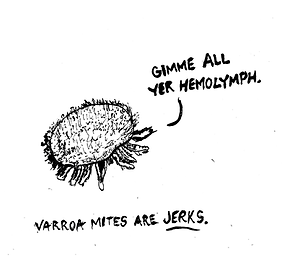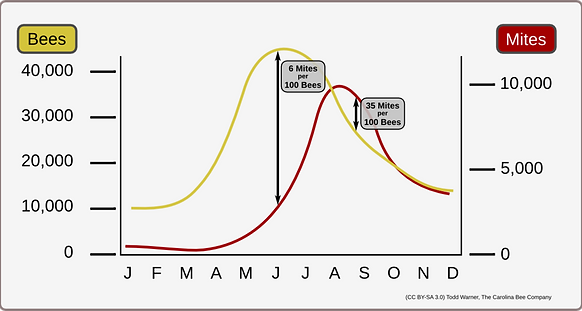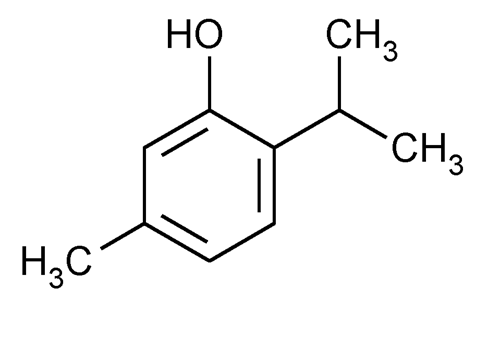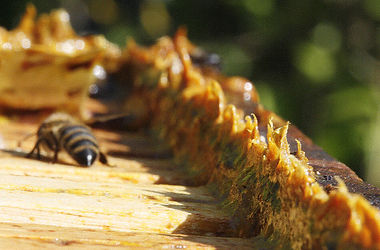
METU HS Ankara 2015 Team
VARROA CULA



Project Description
Our Project Varroa-Cula is about a parasitic disease called Varroasis caused by Varroa destructor. Varroa destructor is an ecto-parasite that attacks the honey bees Apis cerana and Apis mellifera all around the world [1].This cause weight loss, deformities, diseases and reduction of life span [2]. Hive collapses and/or colony loses are also major consequences of this disease [3]. To battle with varroas beekeepers use variety of chemicals that damage the bee and decrease the quality of honey [4]. Our aim is to save the larvas from varroas by the using of synthetic biology. The prototype designed by our team can repell Varroa destructor by releasing essential oils. Essential oils contain mixtures of mostly volatile and odorous terpenoid constituents, they are also safer and have unfavorable effects on the environment [5]. We expect that, with our designed prototype that contains modified E. Coli varroas will be repelled from hive just before their attack season.
Why Bees?
Bees are one of the most important animals that protect the stability of the world. They have important roles in production of vegetables, fruits. Also, Honeybees and the other pollinators helped production of $19 billion worth of agricultural crops in 2010 and this is just in the U.S.A [6]. Therefore, after we perceived the severity of the bees we started to think about a world without bees. That’s why we looked diseases that create major problems to beekeepers and bees for decades.
After our researches and reading of numerous articles we found out that varroa mites are sworn enemies of bees. After we learn this we had only one goal to accomplish. We have to find a solution to keep away varroa mites from bee larva’s. We, as METU High School Ankara Team, aim to prevent the extinction of bees ‘the protectors of our world’.


Figure 1. Demonstration of synthetic construct
Figure 2. Importance of bees in agriculture
Figure 3. Foods pollinated by bees
Definition of our Problem
Who are you Varroa?
Varroa Destructor was first recorded in Singapore, 1951. Later on it was found on European Honey Bee; Apis Mellifera in Asia, 1960s. Through the years it spread around the world and became a popular problem for beekeepers. [7]
Varroa mite is an external parasite (ecto-parasite) that can be seen by naked eye. It is kind of aracnids and its taxonomic hierarchy is as follows [8]:
Kingdom: Animalia
Phylum: Arthropoda
Class: Arachnida
Subclass: Acari
Order: Mesostigmata
Superfamily: Dermanyssoidea
Family: Varroidae (Delfinado & Baker, 1974)
Genus: Varroa (Oudemans, 1904)

Figure 4. Varroa Destructor on Bee Larva
mtDNA gene sequences of V. jacobsoni can be found in GenBank database; V. jacobsoni: AF106902– AF106910; V. destructor: AF106897–AF106901. [9]

Figure 5. Image showing Life Cycle of Varroa mite

Figure 6. Varroa comic
The female mite has brown to reddishbrown color, their size varies from 1.1 to 1.2 mm in length and 1.5 to 1.6 mm in width (about the size of a pinhead). Males are smaller than females with the size about 0.7 mm by 0.7 mm, and they have light tan color. Adult males do not feed and are not found outside of brood cells. (MAAREC, 2005). [10]

Figure 7. Image showing development of bee with Varroa mite
Life cycle of varroa consists of four developmental stages; the egg, two eight-legged nymphal stages and adult. The period from egg to adult takes about 6 to 7 days for the female and 5 to 6 days for the male. Mating occurs in the brood cells before the new adult females emerge. The adult males die after copulation since their mouth parts (chelicerae) are modified for sperm transfer rather than feeding. The old female and the newly-fertilized female offspring remain in the brood cell until the young bee emerges. The adult bee serves as an intermediate host and a means of transport for these female mites (MAAREC,2015). [11]

Figure 8. Graph that showes the increase in the number of mites per 100 bees.
Cinnamon Oil
Why better than drugs?
To battle with varroas beekeepers use variety of chemicals such as coumaphos, malathion, tau-fluvalinate, flumethrin and amitraz against Varroa destructor. [11]
The repeated application of these products, besides the increase in the resistance of the mite causes increasing residues in honeybees products. The alternative control method without chemical contamination of the bee hive products is the use of organic acids or components of essential oils.
One of the most promising substances is thymol. It has a wide spectrum of action on different pathogens, and it is the most promising feature for an alternative treatment against mites. In addition, it prevents the development of those microorganisms that arise as a consequence of the weakening of bee colonies. Drawbacks of thymol are obvious: contaminates the honey, reduces egg laying and leads to death of queen bees. [12]

Figure 9. thymol

Figure 10. Table showing mite mortality during thymol based experiment
Propolis is a honey bee product which is in glue-like structure. It is an important element for the honey bees since it provides to construct, repair and protect their hives. It is composed from different tree buds and barks mixed with bees wax.[13] It is mainly composed of resin, beeswax, plant wax, pollen, essential oils and aromatic acids. Cinnamic acid and cinnamyl alcohol are major ingredients in propolis. [14] So that they are natural components since they are found in bee’s very own product; propolis. That’s why the chemicals we use are considered as harmless to bees.

Figure 11. Propolis
How it functions:
Nowadays, mainly plant essential oils and organic acids are applied because they are safer and impose less unfavorable effects on the environment. Essential oils contain mixtures of mostly volatile and odorous terpenoid constituents. The molecular targets of these substances are tyramine and/or octopamine receptors that control and modulate vital functions ranging from metabolism to behavior. Disturbing the native function of these receptors in the mite results in deleterious effects in this parasite. This overview considers not only tyramine and octopamine receptors but also other potential targets of essential oils including ionotropic GABAA receptors, TRP type ion channels and acetylcholinesterase.
The neurotoxic activity of essential oils and/ or their purified constituents (eugenol, α- terpineol, cinnamic alcohol) against various insect species is probably attributable to binding to tyramine and octopamine receptors (Enan 2001). Octopamine and essential oil constituents (10 nM) have been found to cause a significant increase in intracellular cAMP concentration ([cAMP]i) in the cotton bollworm, Helicoverpa armigera (Kostyukovsky et al. 2002). The octopamine receptor antagonist phentolamine effectively inhibits the increase in [cAMP]i induced by essential oil treatment. These results support the hypothesis that native octopamine receptors are targets of essential oil constituents (Kostyukovsky et al. 2002). [15]
Structure of Cinnamaldeyhyde:
Cinnamon oil is composed of 65 percent of cinnamaldehyde obtained from bark of cinnamon trees and has strong flavor of cinnamon. [16] It is aromatic and a unsaturated aldehyde. Also it is a Standardized Chemical Allergen. ‘’ The physiologic effect of cinnamyl alcohol is by means of Increased Histamine Release and Cell-mediated Immunity. [17]
Identity of Cinnamyaldeyhyde:
Molecular Formula: C9H8O
Molecular Weight: 132.15922 g/mol
Price: 34.50 EUR [18]

Figure 12. Cinnamon Bark and Powder

Figure 13. Cinnmyl alcohol dehydrogenase 1
enzyme 3D structure
Identity of Cinnamyl alcohol:
Molecular Formula: C9H10O
Molecular Weight: 134.1751 g/mol
Price: 18.20 EUR [19]

Figure 14. Cinnmyl alcohol dehydrogenase 1
enzyme 3D structure
Enzymatic reaction of Cinnamyl Alcohol Dehydrogenase [20]
EC Number: 1.1.1.194
Cinnamyl alcohol + NADP+ <=> Cinnamaldehyde + NADPH + H+
References
[1]Liu, T., & Peng, Y. (1990). Scanning electron microscopic observation of the pretarsal suckers of the honey-bee ectoparasite,Varroa jacobsoni (Gamasida: Dermanyssina).
[2]AUSMUS, STEPHEN. "Saving Bees: Fungus Found To Attack Varroa Mites." AgResearch Magazine, October 1, 2004.
[3]Hunt, G. (n.d.). PARASITIC MITES OF HONEY BEES.
[4]VARROA MITE CONTROL IN SOUTH CAROLINA. (n.d.).
[5]Blenau, W., RADEMACHER, E., & Baumann, A. (2012). Https://hal.archives-ouvertes.fr/hal-01003531/document.
[6]Onegreenplanet/ Why Bees Are Important to Our Planet/np/ http://www.onegreenplanet.org/animalsandnature/why-bees-are-important-to-our-planet/
[7]Sanford, M., Denmark, H., Cromroy, H., & Cutts, L. (n.d.). Varroa Mite, Varroa destructor . (=jacobsoni) Anderson & Trueman (Arachnida: Acari: Varroidae)1.
[8]Aydın, L., Güleğen, E., çakmak, I., & Girişkin, A. (2000). The Occurrence of Varroa destructor Anderson and Trueman, 2000 on Honey Bees (Apis mellifera) in Turkey.
[9]Rosenkranz, P., Aumeier, P., & Ziegelmann, B. (2010). Biology and control of Varroa destructor.
[10]Rosenkranz, P., Aumeier, P., & Ziegelmann, B. (2010). Biology and control of Varroa destructor.
[11]Rosenkranz, P., Aumeier, P., & Ziegelmann, B. (2010). Biology and control of Varroa destructor.
[12]Sanford, M., Denmark, H., Cromroy, H., & Cutts, L. (n.d.). Varroa Mite, Varroa destructor
(=jacobsoni) Anderson & Trueman (Arachnida: Acari: Varroidae)
[13]Tananaki, C., Goras, G., Huggett, N., Karazafiris, E., Dimou, M., & Thrasyvoulou, A.
(2014, February 20). Evaluation of the impact of Exomite Pro™ on Varroa mite (Varroa destructor) populations and honeybee (Apis mellifera) colonies: Efficacy, side effects and residues.Springer-Verlag Berlin Heidelberg 2014, 1251–1259
[14]. DermNet NZ/ Contact allergy to propolis/NP/ http://dermnetnz.org/dermatitis/propolis-allergy.html1
[15]. Sołtys, K. (2013). Allergy to Propolis in Beekeepers-A Literature Review
Figure 11. Retrieved from :mr-ginseng/propolis/(np)/http://en.mr-ginseng.com/propolis/
[16]. Blenau, W., RADEMACHER, E., & Baumann, A. (2012). Https://hal.archives-ouvertes.fr/hal-01003531/document.
[17]. Burt, S. (2014). Essential oils: Their antibacterial properties and potential applications in foods—a review.
[18]pubchem/Cinnamylyl_alcohol#section=Top
[19]pubchem/Cinnamaldehyde/NP/https://pubchem.ncbi.nlm.nih.gov/compound/cinnamaldehyde
[20].pubchem/Cinnamyl Alcohol/NP/https://pubchem.ncbi.nlm.nih.gov/compound/cinnamyl_alcohol#section=Top
[21].MetaCyc/ Enzymatic reaction of: cinnamyl alcohol dehydrogenase/NP/http://biocyc.org/META/NEW-IMAGEtype=ENZYME&object=MONOMER-14183
Figure 2. Retrieved from http://3.bp.blogspot.com/-
Figure 3. Retrieved from https://nohoneymoproblems.wordpress.com/why-should we care/epbuY7scRqs/UkmUPvq1sAI
/AAAAAAAAG3A/lSkvsdXC9ng/s1600/Bees1.jpg
Figure 4. Retrieved from http://4.bp.blogspot.com/-CaqY9iiAhxU/T33 xhuiV4I/AAAAAAAACPM/hNDRte5YRMM/s1600/Varroa-mite-on-pupa.jpg
Figure 5.Retreived from http://hdimagegallery.net/varroa+jacobsoni+mite
Figure 6.Retreived from https://mxdrum.wordpress.com/tag/senior-project/
Figure 7.Retreived from http://www.tonylinka.com/scientific/varroa_mites.html
Figure 8.Retrieved from http://static1.squarespace.com/static/52eebd87e4b025a62488780a/t/530ffc9be4b0ce7399034607
/1393556635982/bee+and+mite+populations.png
Figure 9. Retrieved from: pharmacopeia/thymol/NP/http://www.pharmacopeia.cn/v29240/usp29nf24s0_m83310.html
Figure 10. Retrieved from: Tananaki, C., Goras, G., Huggett, N., Karazafiris, E., Dimou, M., & Thrasyvoulou, A.
(2014, February 20). Evaluation of the impact of Exomite Pro™ on Varroa mite (Varroa
destructor) populations and honeybee (Apis mellifera) colonies: Efficacy, side effects and residues.Springer-Verlag Berlin Heidelberg 2014,1251–1259
Figure 11. Retrieved from :mr-ginseng/propolis/(np)/http://en.mr-ginseng.com/propolis/
Figure 12. Retrived from: http://www.neocogita.com/wp-content/uploads/cynamon-w-laskach-cinnam_7415.jpg
Figure 13. Retrieved from: E., V., C., L., WF., O., X., P., I., F., & JA., B. (2004, August 20). Apo and Holo structures of an NADPH-dependent cinnamyl alcohol dehydrogenase from Saccharomyces cerevisiae.
Figure 14. Retrieved from: . E., V., C., L., WF., O., X., P., I., F., & JA., B. (2004, August 20). Apo and Holo structures of an NADPH-dependent cinnamyl alcohol dehydrogenase from Saccharomyces cerevisiae.